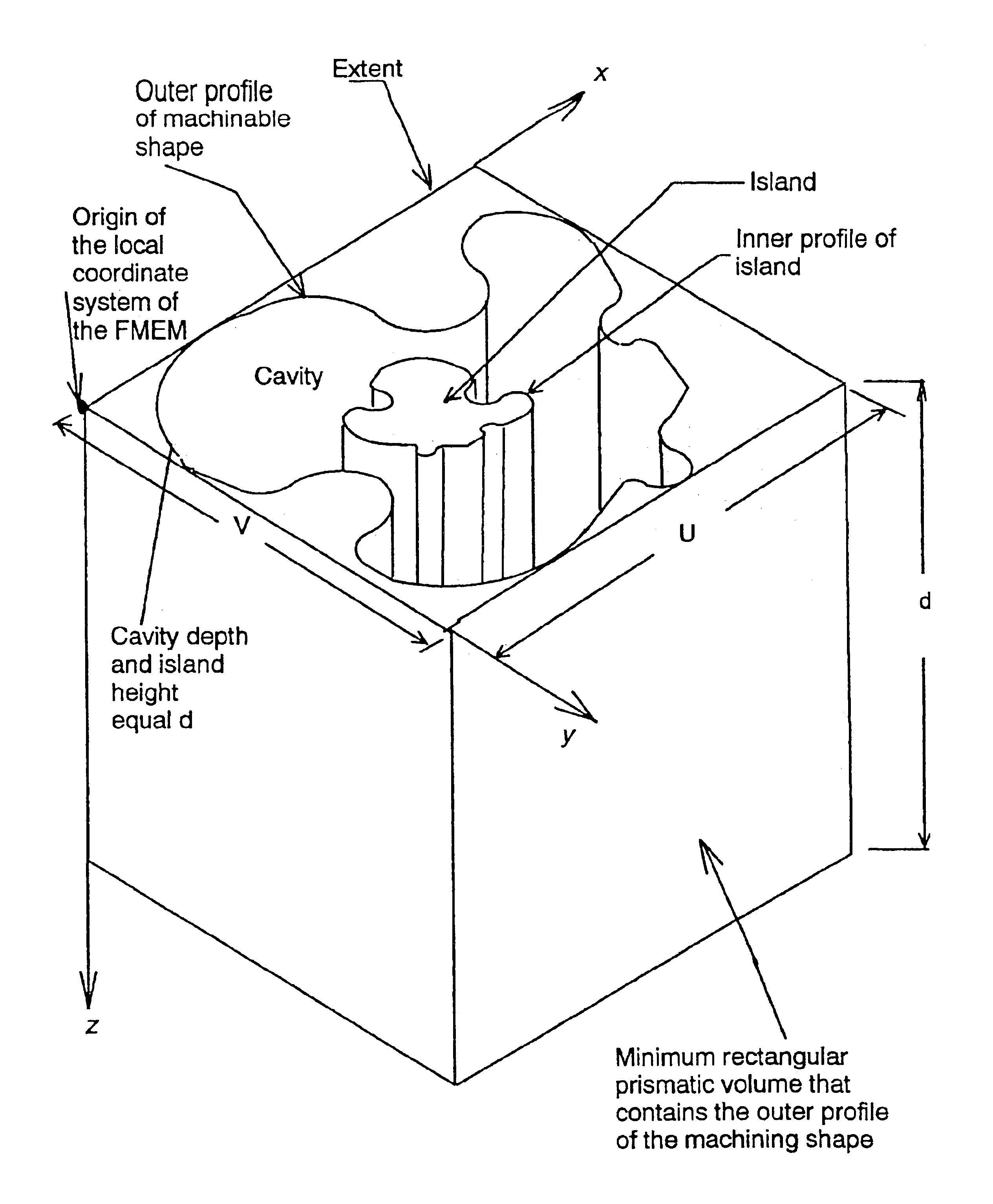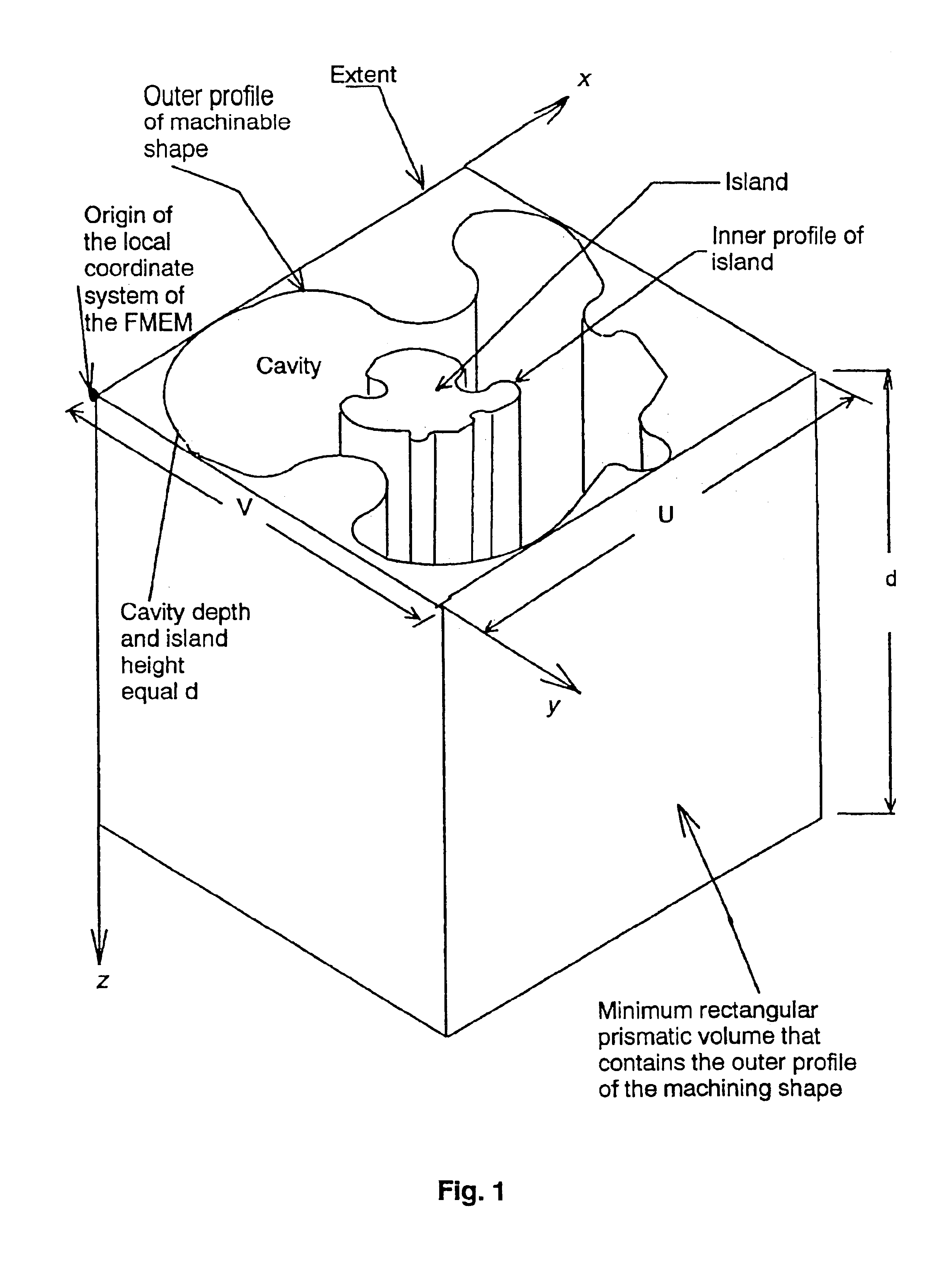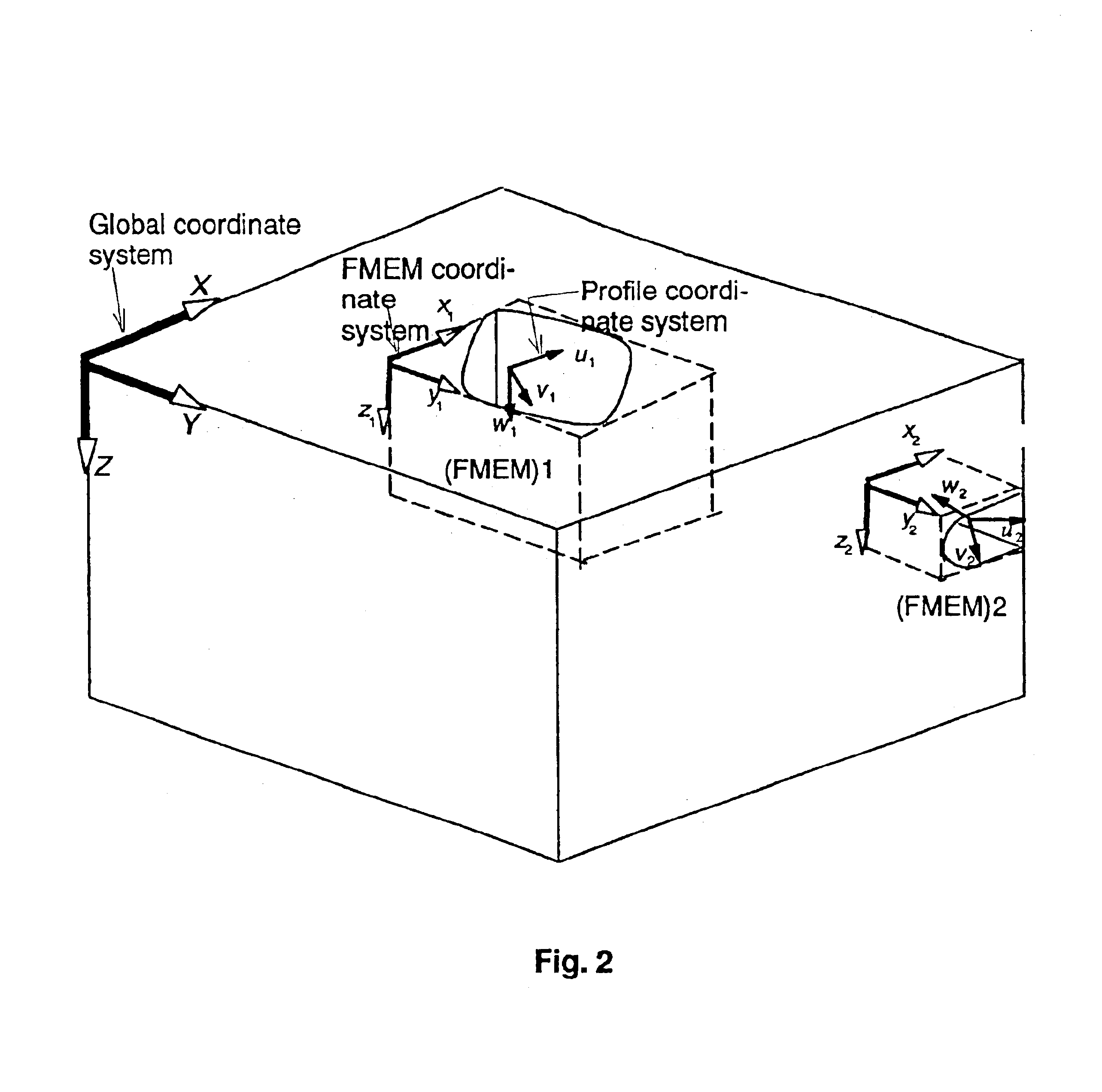Fully integrated machinable profile based parametric solid modeler
a parametric solid modeler and fully integrated technology, applied in the field of solid modelers, can solve the problems of inability to compute the surface area and volume of parts, the inability to use the surface model to determine the volume of objects, and the difficulty of using the present modelers to represent all but the simplest material removal operations
- Summary
- Abstract
- Description
- Claims
- Application Information
AI Technical Summary
Benefits of technology
Problems solved by technology
Method used
Image
Examples
Embodiment Construction
FIG. 1 illustrates the Fundamental Manufacturing Entity for Milling (FMEM), which is defined as the smallest solid volume that contains all the geometric information necessary to describe the shape of the volume of material removed during machining. The FMEM is a regular rectangular prismatic geometry containing a cavity and an island within the cavity. The shapes of the cavity and the island are each represented by very general profiles. The outer profile is contained within the smallest rectangular box of dimension U and V such that these edges are parallel to, and coincide with, the local coordinate axes x and y. The profile of the island can have any orientation with respect to the profile of the outer boundary, which in turn can have any orientation with respect to the coordinate axes x and y. The depth of the cavity and the depth of the prismatic block are equal. The profile can be applied to any of the six surfaces of the prismatic block.
The three coordinate systems used in t...
PUM
 Login to View More
Login to View More Abstract
Description
Claims
Application Information
 Login to View More
Login to View More - R&D
- Intellectual Property
- Life Sciences
- Materials
- Tech Scout
- Unparalleled Data Quality
- Higher Quality Content
- 60% Fewer Hallucinations
Browse by: Latest US Patents, China's latest patents, Technical Efficacy Thesaurus, Application Domain, Technology Topic, Popular Technical Reports.
© 2025 PatSnap. All rights reserved.Legal|Privacy policy|Modern Slavery Act Transparency Statement|Sitemap|About US| Contact US: help@patsnap.com



